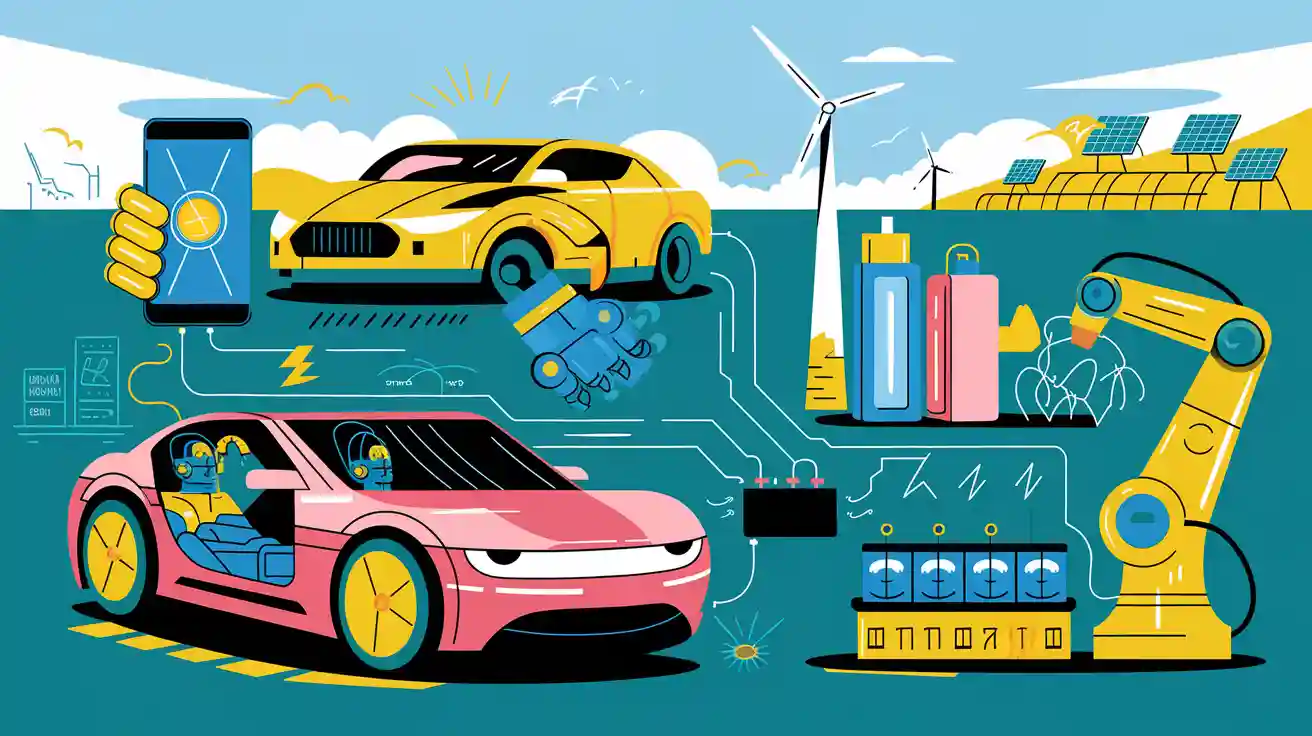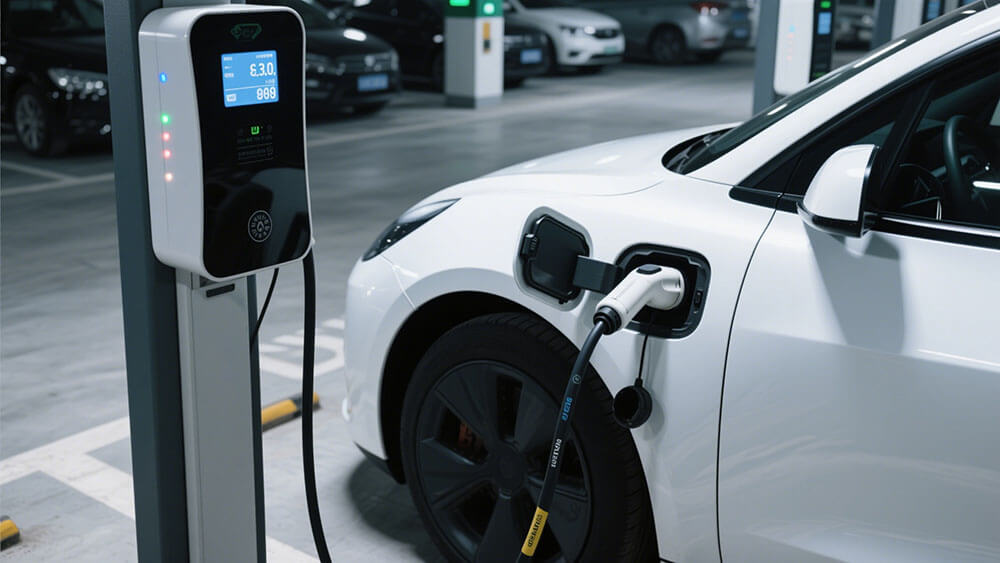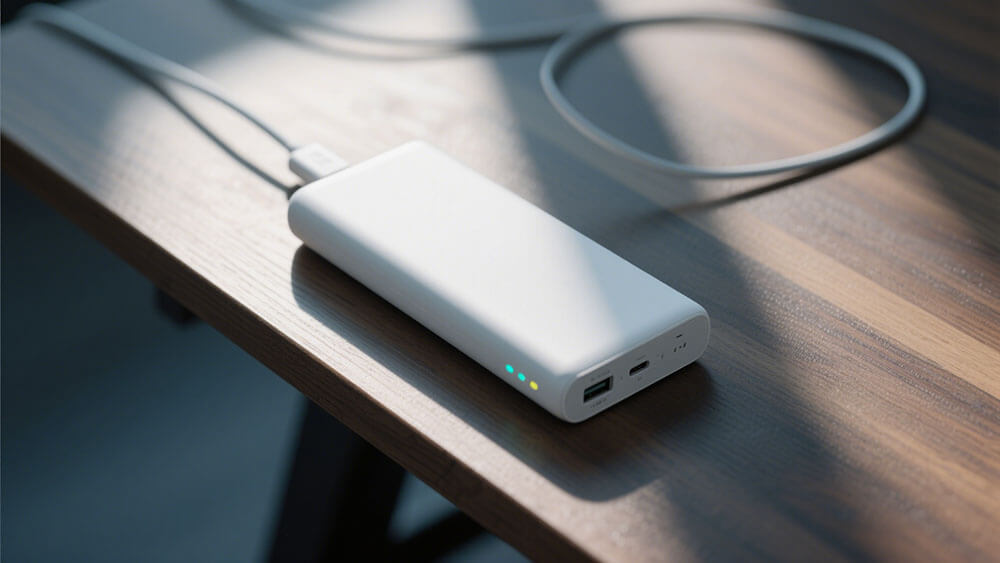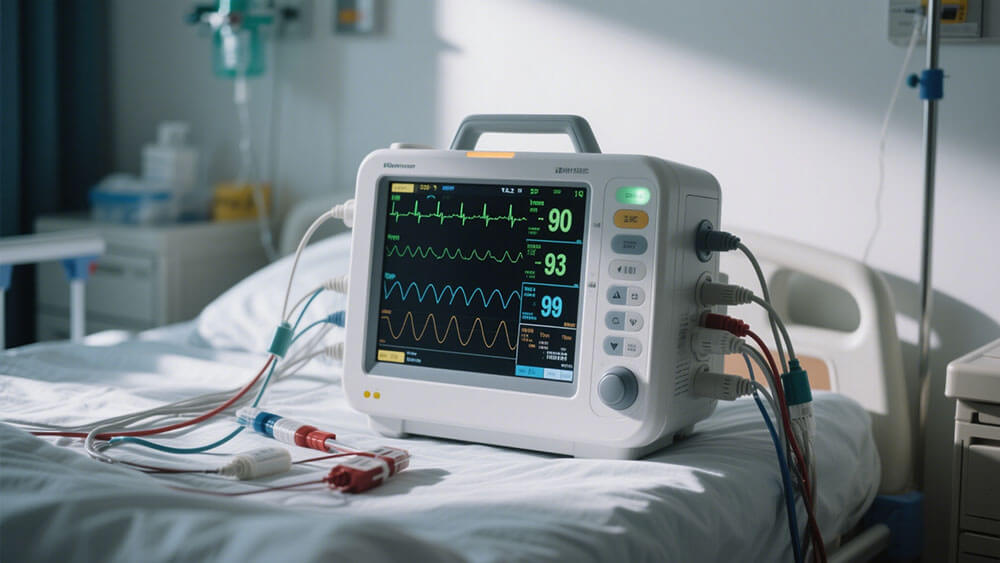
Lithium-ion batteries have transformed how industries approach energy challenges. They deliver unmatched efficiency, scalability, and sustainability. In 2023, the market for these batteries reached USD 56.12 billion, with projections estimating a staggering USD 181.45 billion by 2030. Their adoption has also driven global efficiency improvements, including a 20% reduction in carbon emissions and an 18.1% increase in material recovery rates. These advancements highlight their role in providing sustainable solutions while aligning with market trends. From powering electric vehicles to supporting renewable energy systems, the common applications of lithium-ion battery technology continue to redefine modern capabilities.
Key Takeaways
Lithium-ion batteries are important for electric cars. The market may grow to USD 72.58 billion by 2025. This helps the planet by using less fossil fuel energy.
In gadgets, lithium-ion batteries make devices work better. They store lots of energy and last a long time. Phones, laptops, and smartwatches need these batteries to stay portable and useful.
Solar and wind energy use lithium-ion batteries to store power. These batteries help keep energy steady and clean. They are important for protecting the environment.
Part 1: Common Applications of Lithium-ion Battery in Automotive Industry

The automotive industry has embraced lithium-ion battery technology as a cornerstone for innovation and sustainability. These batteries power a wide range of vehicles, from fully electric models to hybrids, while addressing the growing demand for energy-efficient and environmentally friendly transportation solutions.
1.1 Electric Vehicles (EVs) and 2025 Applications
Electric vehicles (EVs) represent one of the most transformative applications of lithium-ion batteries. By 2025, the number of battery electric vehicles (BEVs) on the road is projected to reach 9.6 million, reflecting the rapid adoption of this technology. Governments worldwide are incentivizing EV adoption through financial support and infrastructure development. For instance, the U.S. Infrastructure Investment and Jobs Act allocated $7.5 billion to establish a nationwide EV charging network, ensuring seamless integration of EVs into daily life.
The market for lithium-ion batteries in EVs is also expanding rapidly. In 2025, the market size is expected to reach USD 72.58 billion, driven by advancements in battery technology and increasing demand for high energy density solutions. Automakers are responding to this trend by introducing new electric vehicle models and setting ambitious electrification targets. These efforts align with global sustainability goals, reducing reliance on fossil fuels and lowering carbon emissions.
Key market opportunities include the development of batteries with higher energy densities, improved safety features, and longer lifespans. These advancements will enhance the performance and reliability of EVs, making them a more attractive option for consumers and businesses alike.
1.2 Hybrid and Plug-in Hybrid Vehicles
Hybrid and plug-in hybrid vehicles (PHEVs) bridge the gap between traditional internal combustion engines and fully electric vehicles. These vehicles rely on lithium-ion batteries to store energy and improve fuel efficiency. The dual powertrain system allows hybrids to switch seamlessly between electric and gasoline power, reducing emissions and fuel consumption.
Lithium-ion batteries used in hybrids and PHEVs offer several advantages, including lightweight construction, high energy density, and fast charging capabilities. These features make them ideal for applications requiring both performance and efficiency. As automakers continue to innovate, hybrid and plug-in hybrid vehicles are becoming more accessible and affordable, further driving their adoption.
Part 2: Common Applications of Lithium-ion Battery in Consumer Electronics

2.1 Smartphones, Laptops, and Wearables
Smartphones, laptops, and wearables rely heavily on lithium-ion batteries to deliver high-performance functionality. These devices demand compact, lightweight batteries with high energy density to support their advanced features. For instance, smartphones now offer extended battery life, enabling you to stay connected throughout the day. Wearables, such as fitness trackers and smartwatches, benefit from lithium-ion batteries’ ability to store more energy in smaller packages, ensuring comfort and usability.
The growing market for these devices underscores the importance of advancements in lithium-ion battery technology. Manufacturers are focusing on improving energy density and battery longevity to meet consumer expectations for high-performance devices.
2.2 Portable Power Banks and Charging Solutions
The increasing reliance on portable electronics has driven the demand for power banks and advanced charging solutions. Power banks provide a convenient way to keep your devices charged, especially during travel or remote work. Innovations in this sector, such as triple-port designs and fast-charging capabilities, enhance user experience and cater to diverse needs.
Remote working has increased the need for portable charging solutions.
Gaming enthusiasts use power banks to ensure uninterrupted gaming sessions.
Travelers rely on power banks for navigation and device usage on the go.
The market for power banks is expanding rapidly, fueled by the limited battery capacity of smartphones and the growing need for reliable charging options. As a result, manufacturers are investing in research and development to introduce more efficient and versatile products.
Tip: If you’re looking for custom battery solutions tailored to your specific needs, explore our offerings here: Custom Battery Solutions.
Part 3: 2025 Applications of Lithium-ion Battery in Renewable Energy

The renewable energy sector has witnessed a transformative shift with the integration of lithium-ion battery technology. These batteries play a pivotal role in addressing the intermittency of renewable energy sources like solar and wind, ensuring a stable and reliable power supply. By 2025, advancements in lithium-ion battery applications will further enhance energy storage solutions, grid stability, and sustainability.
3.1 Energy Storage Systems (ESS) for Solar and Wind Power
Energy storage systems (ESS) are essential for harnessing the full potential of renewable energy. Solar and wind power generation often fluctuates due to weather conditions, creating challenges for consistent energy supply. Lithium-ion batteries provide a robust solution by storing excess energy during peak production and releasing it during periods of low generation.
The global market for lithium-ion battery cells is projected to reach US$405 billion by 2035, growing at a CAGR of 9.9% from 2023 to 2035.
Energy storage systems, including grid-scale batteries and residential energy storage solutions, are significant drivers of this growth.
These systems are crucial for integrating renewable energy sources into the power grid, ensuring a seamless transition to cleaner energy.
Case studies further highlight the effectiveness of ESS in renewable energy integration:
Study Title | Description | Key Findings |
|---|---|---|
Storage Futures Study | Analyzed the role of energy storage in the U.S. power grid through 2050. | Explored cost-competitive storage technologies and their impact on grid resilience. |
Economic Potential of Diurnal Storage in the U.S. Power Sector | Evaluated feasibility using net present cost and Levelized Cost Of Energy (LCOE). | Found optimal configurations for hybrid systems in rural Nigeria using renewable resources. |
These findings underscore the importance of lithium-ion batteries in achieving energy independence and reducing the environmental impact of traditional energy systems.
Tip: If you’re exploring custom energy storage solutions tailored to your renewable energy projects, consider consulting with experts at Large Power.
3.2 Circular Solutions for Decentralized Energy Storage
The shift toward decentralized energy storage aligns with the principles of the circular economy. Lithium-ion batteries enable localized energy storage, reducing reliance on centralized power grids and minimizing transmission losses. This approach not only enhances energy efficiency but also supports sustainability goals.
Innovative recycling methods are being developed to address the environmental impact of spent batteries. For instance, circular refinement processes consume less energy and water compared to conventional mining, making them a more sustainable alternative. By 2040, the adoption of circular solutions could significantly reduce the waste generated by lithium-ion batteries, ensuring a greener future for renewable energy applications.
Note: To learn more about sustainability initiatives in lithium-ion battery technology, visit Sustainability at Large Power.
Part 4: Lithium-ion Battery Applications in Healthcare Industry

Lithium-ion batteries have revolutionized healthcare by powering critical medical devices and portable equipment. Their reliability, energy efficiency, and compact design make them indispensable in modern medical applications.
4.1 Medical Devices and Portable Equipment
Lithium-ion battery technology plays a vital role in powering portable medical devices. These include defibrillators, insulin pumps, and remote patient monitors, which require consistent and reliable energy sources. The ability to accurately estimate the Remaining Useful Life (RUL) of lithium-ion batteries ensures the reliability of life-saving tools. Predictive maintenance models further enhance safety by identifying end-of-life batteries before they fail.
Benefit/Feature | Description |
|---|---|
Powering Medical Devices | Lithium-ion batteries are used in portable defibrillators, insulin pumps, and remote patient monitors. |
RUL Estimation | Accurate estimation of Remaining Useful Life is crucial for the reliability of life-saving tools. |
Predictive Maintenance | Data-driven models help foresee battery end-of-life, ensuring timely replacements and patient safety. |
The healthcare industry benefits from lithium cobalt oxide batteries (LCO), which offer high energy density and a platform voltage of 3.7V. These batteries provide the reliability needed for critical applications, ensuring uninterrupted operation during emergencies.
Tip: Explore custom medical battery solutions tailored to your needs at Large Power.
4.2 Powering Wearable Health Monitors
Wearable health monitors rely on lithium-ion battery technology to deliver accurate and continuous data. Devices such as heart rate monitors and glucose trackers require lightweight batteries with extended lifespans. Lithium cobalt oxide batteries excel in these applications due to their compact design and energy efficiency.
Emerging trends in battery technology focus on improving longevity and safety. Solid-state batteries, for instance, enhance thermal stability and reduce risks associated with lithium-ion batteries. These advancements ensure wearable devices remain reliable and safe for long-term use.
4.3 Reliability in Critical Healthcare Applications
Reliability is paramount in healthcare, where lithium-ion batteries power critical equipment such as ventilators and surgical tools. Lithium cobalt oxide batteries provide the high energy density and durability required for these applications. Their ability to withstand demanding conditions ensures uninterrupted operation during critical procedures.
The healthcare sector also prioritizes sustainability. Recycling end-of-life batteries reduces waste and recovers critical materials like cobalt and nickel. By adopting circular solutions, industries can minimize environmental impact while maintaining operational efficiency.
Note: Learn more about sustainability initiatives in lithium-ion battery technology at Large Power.
Part 5: Industrial Applications of Lithium-ion Batteries

Lithium-ion batteries have become a cornerstone in industrial operations, offering unmatched energy efficiency and reliability. Their adaptability makes them indispensable in robotics, material handling, and high-demand environments, driving innovation across industries.
5.1 Robotics and Automation
Robotics and automation systems rely heavily on lithium-ion batteries for their energy needs. These batteries provide high energy density, long cycle life, and consistent performance, making them ideal for powering robots in manufacturing, logistics, and other industrial applications. For instance, lithium-ion batteries enable autonomous robots to operate for extended periods without frequent recharging, ensuring uninterrupted workflows.
The compact design of lithium-ion batteries also allows for seamless integration into robotic systems, enhancing mobility and efficiency. As automation continues to evolve, the demand for reliable and efficient energy solutions will grow, solidifying lithium-ion batteries as a critical component in this sector.
Tip: Explore custom battery solutions for robotics at Large Power.
5.2 Material Handling Equipment (e.g., Forklifts)
Material handling equipment, such as forklifts, has seen a significant shift toward lithium-ion battery technology. These batteries outperform traditional lead-acid batteries in several key areas:
Metric | Lithium-Ion Batteries | Lead-Acid Batteries |
|---|---|---|
Charging Efficiency | 98% | Lower |
Roundtrip Efficiency | 87% | Lower |
Maintenance Needs | Maintenance-free | High maintenance |
Environmental Impact | Lower | Higher |
Performance in Extreme Temps | Consistent | Reduced efficiency |
Lithium-ion batteries offer superior energy efficiency, reducing operational costs over time. They also eliminate the need for regular maintenance, unlike lead-acid batteries, which require frequent upkeep. Additionally, lithium-ion batteries maintain consistent performance across a wide temperature range, ensuring reliability in diverse working conditions.
5.3 Addressing High-demand Industrial Environments
High-demand industrial environments require energy solutions that can withstand rigorous usage. Lithium-ion batteries excel in these settings due to their durability, fast charging capabilities, and long cycle life. Industries such as manufacturing, mining, and construction benefit from the robust performance of these batteries, which support continuous operations without compromising efficiency.
The integration of lithium-ion batteries into industrial systems also aligns with sustainability goals. Their lower environmental impact and recyclability contribute to greener operations, helping industries reduce their carbon footprint.
Note: Learn more about sustainable lithium-ion battery solutions at Large Power.
Lithium-ion batteries are reshaping industries by delivering energy-efficient and scalable solutions. Their versatility drives innovation in diverse sectors, from healthcare to renewable energy. As you look toward 2025, advancements in battery technology will enhance their applications, fostering sustainability and enabling a greener, more efficient future for modern technology.
FAQ
1. What makes lithium-ion batteries a safe choice for various applications?
Lithium-ion batteries feature advanced thermal management systems and protective circuits. These ensure operational safety by preventing overheating, overcharging, and short circuits.
2. How does circularity impact lithium-ion battery recycling?
Circularity promotes efficient recycling by recovering valuable materials like lithium and cobalt. This reduces waste and supports sustainable manufacturing practices.
3. Are lithium-ion batteries reliable in extreme conditions?
Yes, lithium-ion batteries maintain consistent performance across a wide temperature range. Their durability ensures reliability in demanding environments.
Tip: Explore custom battery solutions tailored to your needs at Large Power.




